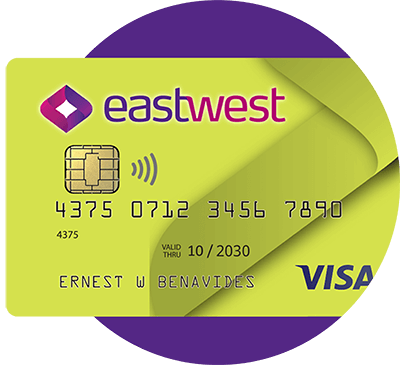Beyond consistently saving, investing is an essential step that helps your money grow over time. Unlike savings, however, investing comes with different levels of risk depending on the type of asset or product you choose. It is important to understand your risk appetite, which refers to how comfortable you are with taking potential losses in exchange for gains.
Knowing your risk appetite isn’t just smart—it’s vital. When your investments match your comfort level, you're more likely to stay committed through changes in the market.
In this article, we’ll walk through several types of investments and their associated risk levels. This guide will help you find options that align with your tolerance, so that you can invest confidently and according to your situation.
Understanding Risk Appetite and Investment Behavior
Risk appetite refers to how much financial uncertainty you’re willing to tolerate in pursuit of returns. Some people prefer near-zero volatility and steady growth, while others may be comfortable with dramatic swings for the chance of bigger gains. Your risk appetite is shaped by your age, financial goals, time horizon, income stability, and personal comfort with risk.
Investors are typically classified as conservative, moderate, or aggressive based on how much short-term loss they can tolerate. For instance, a young investor decades before retirement can generally afford a more aggressive investment portfolio. Meanwhile, individuals nearing retirement often choose safer, more conservative assets to protect what they’ve already saved. You can take EastWest’s profiling quiz to get an idea of whether you’re a conservative, moderate, or aggressive investor. In addition, you can start reading up on the types of investments you can choose from in the sections that follow.
Stable Choices for Low-Risk Investors
For those with a low-risk appetite, the priority is preserving capital and keeping returns predictable. Consider options like high-yield savings accounts, certificates of deposit (CDs), and government-backed treasury bonds. These investments offer stability, albeit with modest returns.
1. High-yield savings accounts are PDIC-insured deposit accounts offering higher interest rates than standard savings. While not a path to wealth, they provide a safe, liquid way to help your money grow and combat inflation.
2. CDs or certificates of deposit are predictable, low-risk, fixed-interest bank deposits suitable for conservative investors comfortable with locking up funds for a set period. Early withdrawal penalties generally apply if you’d need the money sooner than the agreed upon maturity period.
3. Treasury bonds are issued by the government and thus offer guaranteed returns over a fixed term. They are considered among the safest investment options and are ideal for long-term planners who prioritize security over large profits.
While unlikely to consistently outpace inflation, conservative investment strategies reduce anxiety and help preserve capital, making them ideal for many retirees or those nearing retirement who prioritize protecting their savings.
Options that Balance Growth and Stability for Moderate Investors
If you have a moderate risk tolerance, look for investments that provide stability while offering growth. Bond funds, dividend-paying stocks, balanced mutual funds, exchange-traded funds (ETFs), and real estate investment trusts (REITs) are sound options. These investments can grow your portfolio better over time, but with less volatility than pure equities.
1. Offering regular income and generally lower volatility than stocks, bond funds diversify investments across various bonds. However, they are still exposed to interest rate and credit risk. EastWest offers various bond funds, including the EastWest Peso Intermediate Term Bond Fund, EastWest Peso Long Term Bond Fund, and EastWest Dollar Intermediate Term Bond Fund.
2. Dividend-paying stocks are shares of established companies that return a portion of profits to investors. While stock prices can fluctuate, dividends offer a cushion against volatility, making them appealing for those seeking income and modest growth.
3. Balanced mutual funds invest in a mix of stocks and bonds to balance risk and return. Ideal for investors looking for one-stop diversification, balanced mutual funds offer moderate gains with lower volatility than stock-only funds.
4. ETFs are traded like stocks but typically mirror the performance of an index or sector. They offer diversification at lower fees and are suited to those who want to invest in a market trend with manageable risk.
5. REITs allow you to invest in real estate without owning property. They typically pay dividends and offer growth potential but may be affected by interest rates and market trends.
Do note that balanced portfolios often mix roughly equal parts stocks and bonds, offering enough risk to beat inflation without causing unnecessary worry during market dips. These moderate strategies can help you grow steadily while avoiding major swings.
High-Risk Investments for Aggressive Investors
Investors with a high-risk appetite may consider investments with stronger growth potential but higher volatility. These include individual growth stocks, cryptocurrencies, options trading, and startup equity. While these investments can yield substantial returns, they also carry the real possibility of large losses.
1. Characterized by high volatility and often no dividends, growth stocks are from companies anticipated to grow faster than the market. They are best suited for investors with a long-term perspective and a strong appetite for risk due to their potential for high returns.
2. Digital currencies like Bitcoin and Ethereum offer high return potential but are extremely volatile. Regulatory uncertainties and technological risks make crypto a speculative investment suited only for those who can afford potential losses.
3. Options trading allows investors to speculate on the price movements of assets, while startup equity involves investing early in new ventures. Both carry high risk and complexity, but they can yield substantial rewards for knowledgeable, risk-tolerant investors.
Aggressive investing is best suited for investors who have time to recover if markets drop and who can withstand emotional pressure. Those entering such opportunities should stay informed, prepared for volatility, and invest only what they can afford to lose.
Choosing Investments That Match You
The secret to successful investing isn't just about preserving or growing your capital; it's about peace of mind. When you select investments that genuinely fit your risk appetite, you're building a foundation of confidence. If you're just starting, begin by focusing on one investment category that truly aligns with your comfort level. As you become more comfortable, you can slowly diversify, adding small portions from other categories to potentially enhance returns or increase stability.
Ultimately, there's no one-size-fits-all "best" investment approach. Your personal risk appetite, financial goals, and time horizon are your most important guides. Whether you lean conservative, moderate, or aggressive, tailoring your strategy to your comfort zone empowers you to remain consistent and avoid panic when markets inevitably shift. By truly grasping the risks of every investment type and harmonizing them with your personal contentment and prudence, you'll be well-equipped to grow your wealth steadily and with unwavering confidence.
Ready to invest? Check out EastWest’s range of investment products that suit a wide range of risk appetites.
Apply for EastWest Credit Card?
With a variety of options to suit different needs, EastWest Bank offers competitive rates, valuable rewards, and excellent customer service.









